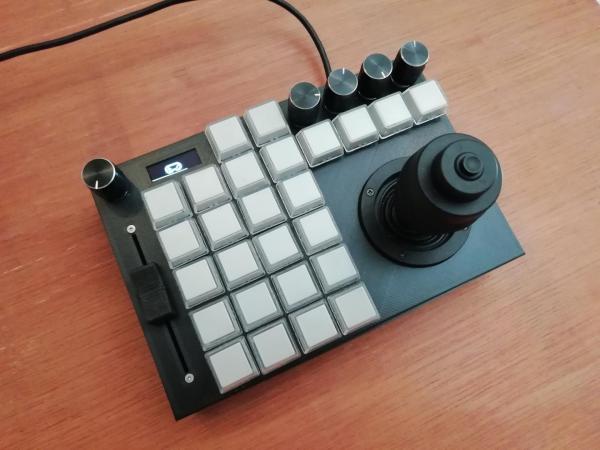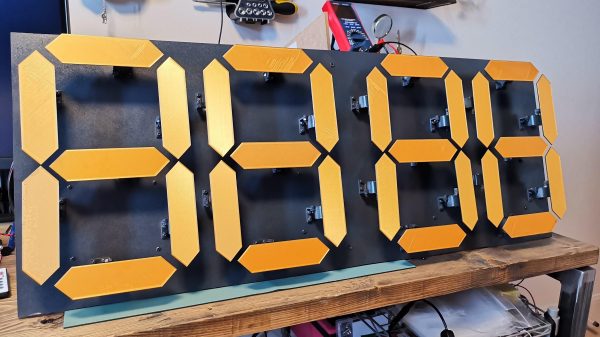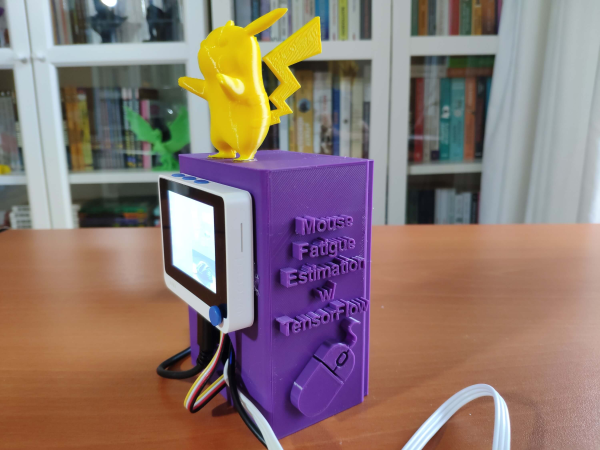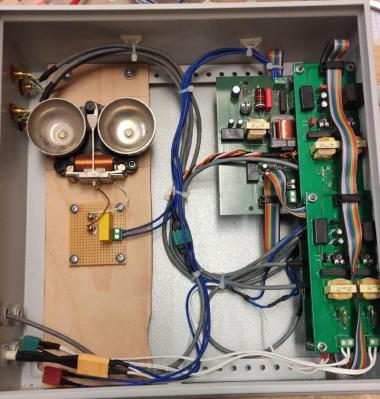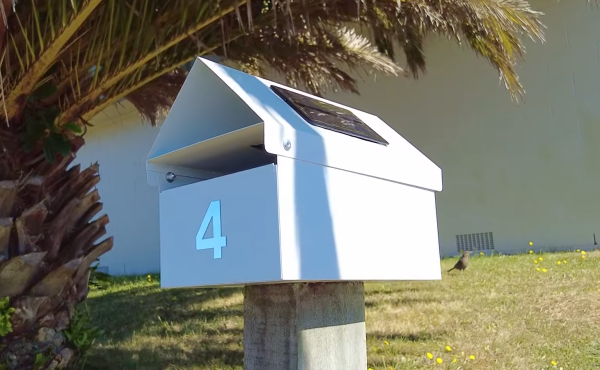When [tdw] wasn’t feeling well one day, his wife suggested that it might be due to poor air quality in their home. While an ordinary person could have simply opened a window after hearing such an idea, [tdw] instead showed his true hacker spirit and set about measuring the indoor air quality. He began by designing a simple PCB to measure CO2 and volatile organic compound (VOC) levels, but eventually broadened his scope to end up with the Sensor Playground: a plug-and-play platform to read out various sensors and store the results in the cloud.
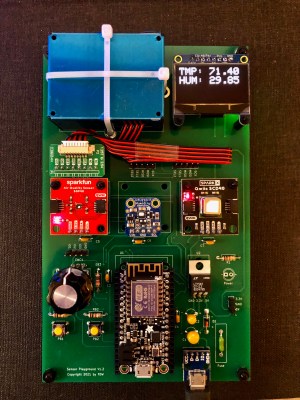 Deliberately designed to be easy to assemble with minimal soldering skills, the Sensor Playground consists of a big two-layer PCB onto which various modules can be plugged. It supports either an ESP32 DevKit or an Adafruit Feather module to provide processing power, and provides sockets for a bunch of sensors, conveniently wired with power and SPI or I2C. It also provides a rotary encoder and two buttons for user input. All source files are available on [tdw]’s GitHub page, ready to be applied to any kind of sensing task.
Deliberately designed to be easy to assemble with minimal soldering skills, the Sensor Playground consists of a big two-layer PCB onto which various modules can be plugged. It supports either an ESP32 DevKit or an Adafruit Feather module to provide processing power, and provides sockets for a bunch of sensors, conveniently wired with power and SPI or I2C. It also provides a rotary encoder and two buttons for user input. All source files are available on [tdw]’s GitHub page, ready to be applied to any kind of sensing task.
[tdw] set up his Sensor Playground with sensors measuring CO2, VOC, PM2.5 (particulate matter), as well as temperature and relative humidity. A web interface allows anyone to track these measurements in real-time. The open and modular design should make it easy to extend this system with various other sensor types: we can imagine that things like solar irradiation, outside temperature and wind speed would also add useful data to the mix. Perhaps even a Geiger counter to keep track of radiation levels?
As indoor air quality sensors go, this one is definitely comprehensive and easy to use. We’ve featured other air quality sensors before, some of which also link their data to the cloud.


